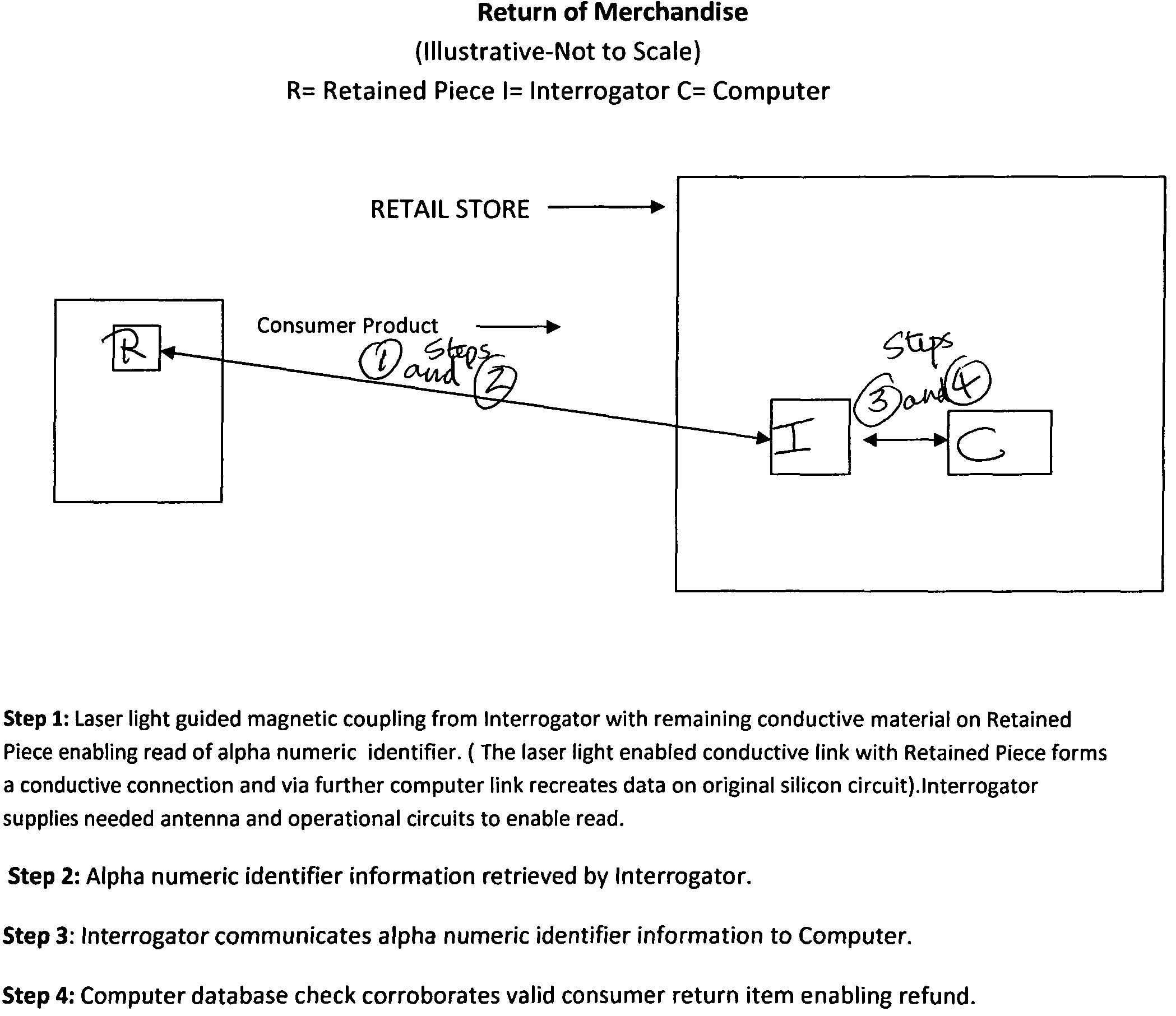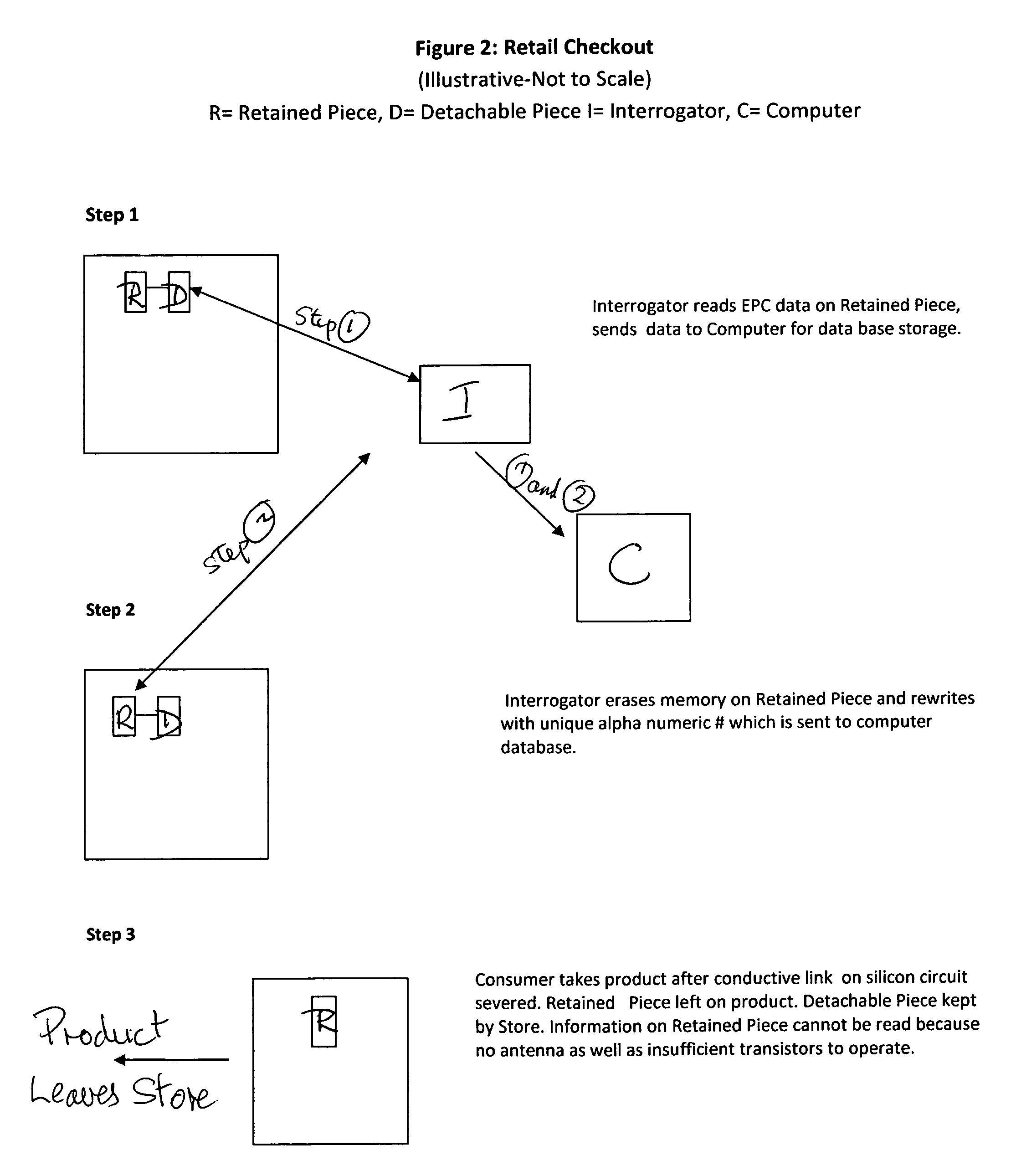Split chip
a technology of split chips and chips, applied in the field of rfid, can solve the problems of inability to retain data, no manner in which information or data on the memory section can be radiated, etc., and achieve the effects of increasing the range and selectivity reducing the cost of the rfid system, and increasing the absorption rate of electromagnetic signals
- Summary
- Abstract
- Description
- Claims
- Application Information
AI Technical Summary
Benefits of technology
Problems solved by technology
Method used
Image
Examples
embodiment
PREFERRED EMBODIMENT
[0048]This present invention, in a preferred embodiment, contemplates a Split Chip method and system as part of the Clip Chip method and system. Accordingly, when a consumer severs the RFID transponders after purchase the RFID transponder is moribund. In the circumstance of a refund or return of consumer item, the circuitry can be reconnected as per the Clip Chip methodology and as outlined above.
[0049]The useful, non-obvious and novel steps of this Invention are the design of an integrated silicon circuit as two separate pieces connected by a fine piece of conductive material such as conductive ink. Each piece is dependent upon the other in order to function. The two pieces, when separated, provide the benefit and function to consumers of complete consumer privacy as the RFID transponders cannot be skimmed of data once separated. In the circumstance of a consumer requirement to reactivate the RFID tag, such as a returned consumer item to a retail outlet, a retur...
PUM
 Login to View More
Login to View More Abstract
Description
Claims
Application Information
 Login to View More
Login to View More - R&D
- Intellectual Property
- Life Sciences
- Materials
- Tech Scout
- Unparalleled Data Quality
- Higher Quality Content
- 60% Fewer Hallucinations
Browse by: Latest US Patents, China's latest patents, Technical Efficacy Thesaurus, Application Domain, Technology Topic, Popular Technical Reports.
© 2025 PatSnap. All rights reserved.Legal|Privacy policy|Modern Slavery Act Transparency Statement|Sitemap|About US| Contact US: help@patsnap.com



